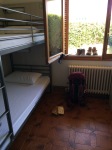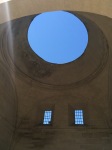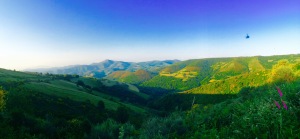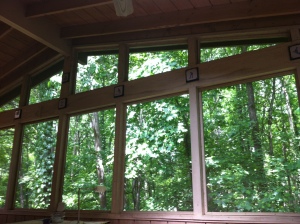“Why are you doing the Camino?” is one of the most common questions a pilgrim is asked along the way. It’s probably the hardest question to answer.
When you request a pilgrim’s passport, the credential that allows you access to the city and charity hostels, they give you a questionnaire to complete, asking your reasons for walking the Camino. The possible reasons include religion, spirituality, culture and history, and sport.
Also, when you stand in line in Santiago de Compostela to receive your “Compostela,” the document that proves you completed the pilgrimage, these same questions are asked. You show your pilgrim’s passport with the stamps you’ve collected along the way, and the volunteer at the desk then asks you to give your age and your motivation for going on the pilgrimage.
My reasons for going to Spain and walking the Camino changed as I went along. From the start my journey was spiritual but not religious. I’m not a practicing Catholic, even though while in Spain I found the ritual to be beautiful at times, but overly somber at others.
What I wanted was the freedom to walk under an expansive sky all day long with nothing to think about except my most basic thoughts, and that is what I received, although the process wasn’t as simple as all that.
I met a retired Australian man named Tim at a hostel in a town called Hornillos del Camino. Over beers in the backyard of the hostel (Australians consider beer to be a food, I’ve been told), Tim said, “The Camino has a way of purifying one’s thoughts. While we walk, the only thoughts that end up calling our attention away from the images, sounds, and smells of walking, are ones that concern the body: Where will I sleep tonight? What will I have for dinner?”
Later that evening I saw Tim lying on the grass with his legs up the wall to let his circulation have a rest, caring for the body.
But not everyone has this experience. I met many young people who were on the Camino to heal from traumatic life experiences. Some were trying to get over heartbreak and loss.
I know I had a few days when I was very tired from all the walking. One night I had too much wine to drink (after walking 20 miles, more than one glass of wine is too much for me), and the next day I walked up one of the highest mountains of the Camino (this story deserves its own blog post, which I will eventually write). For seven kilometers I cried all the way up the mountain, out of self pity, rage, and homesickness.
After about ten days of walking I developed shin splints, and every step I took was painful. I was creeping along when I saw Philip from Belgium who had begun walking two months prior from his hometown. “Take it easy,” he said. “The Camino is the Happy Road.” That’s the day I decided to take a bus to the next town and walk only 10 kilometers.
Philip’s attitude toward the Camino is different than others. Many believe that to go on a true pilgrimage, one should suffer. For Philip, the Camino was a way to celebrate life. He smoked cigarettes, drank coffee, beer, and wine, and walked on the plains at night to see the stars.
One of the names of the Camino is La Via Lactea, The Milky Way. Historians say that early pilgrims followed the Milky Way to reach Santiago de Compostela. Compostela translates as “field of stars.”
I was walking in May, right when many twenty-something students begin their summer vacation, so there were a lot of college kids from all over the U.S. Canada, Europe, and Korea. Many of these kid were doing the Camino as a physical challenge, walking 50 km a day. Their experience was completely different from mine, I’m sure.
At the cathedral in Santiago, I saw a young Korean buddy I had met in France at the beginning; I was weeping from gratitude at having arrived, but he was grinning from ear to ear and said, “Why are you crying?” I just gave him a big hug in response.
I’m still thinking about how my journey has changed me. For now, though, I will keep walking. The Camino lives on.
-

-
Crossroads at the Mount of Forgiveness.
-

-
Wheat field panorama. Approaching storm.
-

-
Hostel, El Jardín de Murazábal.
-

-
Cathedral of the stars
-

-
Triskelion with scallop shell on a door.
-

-
Old school pilgrim.









































